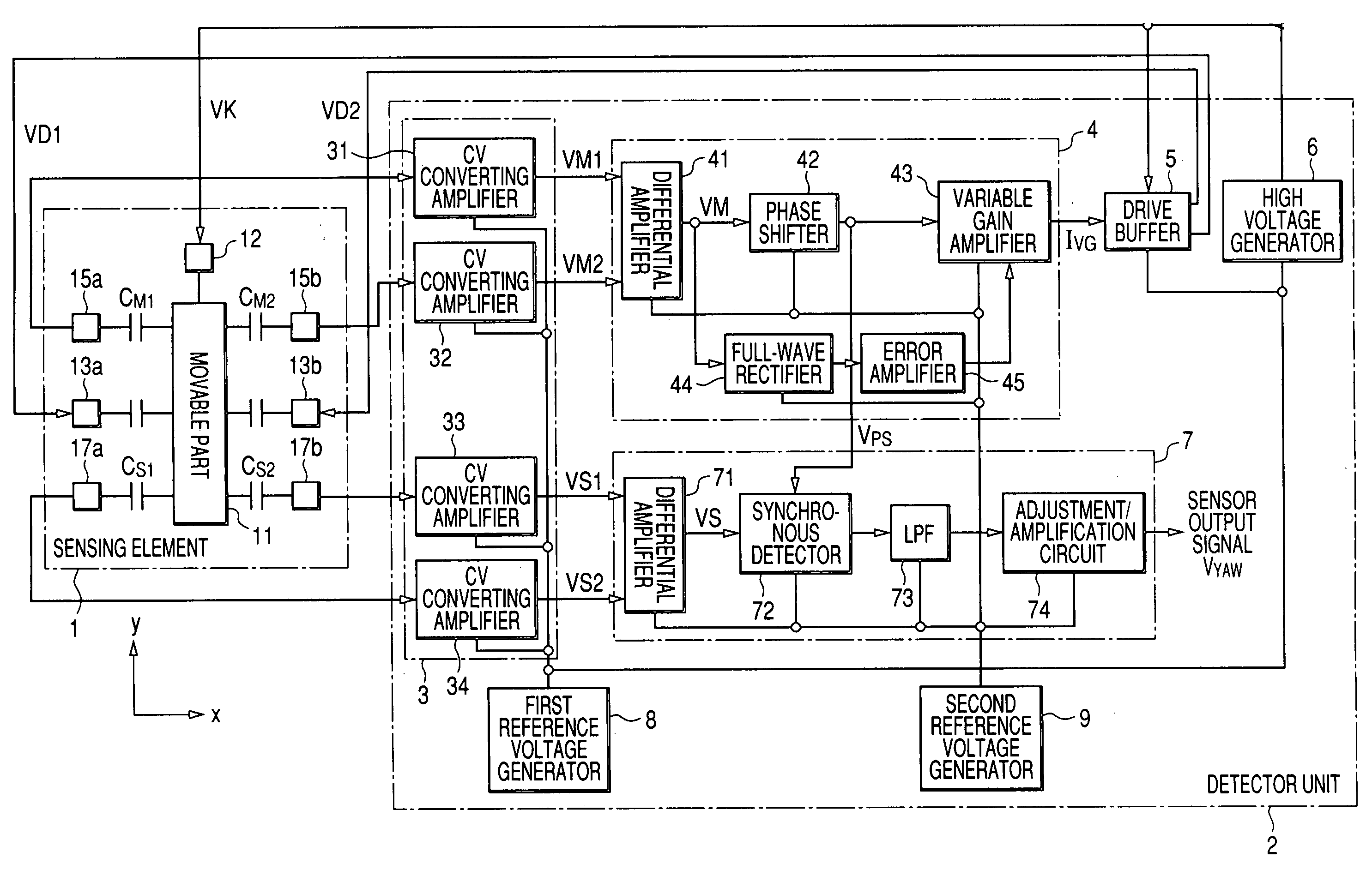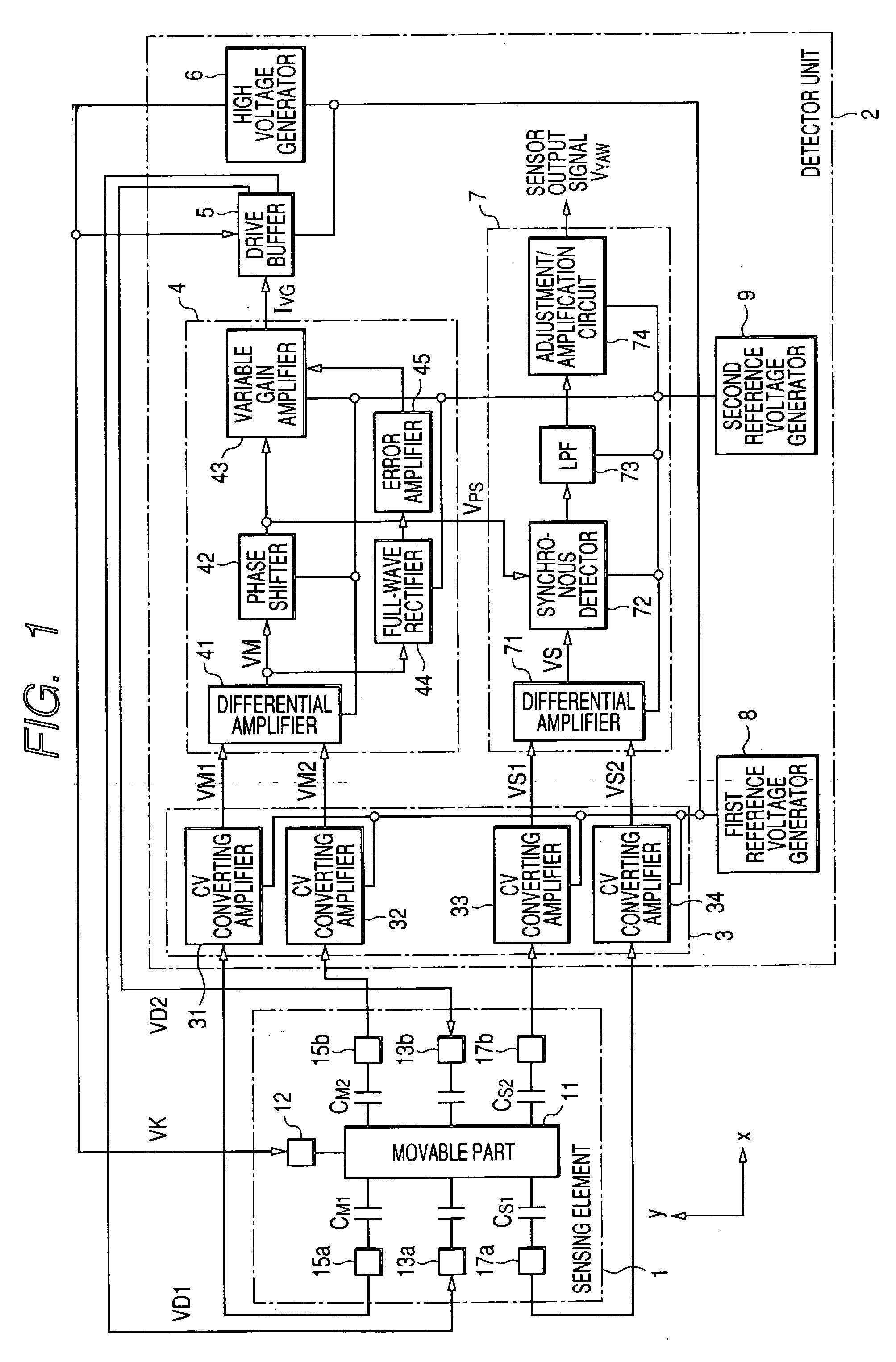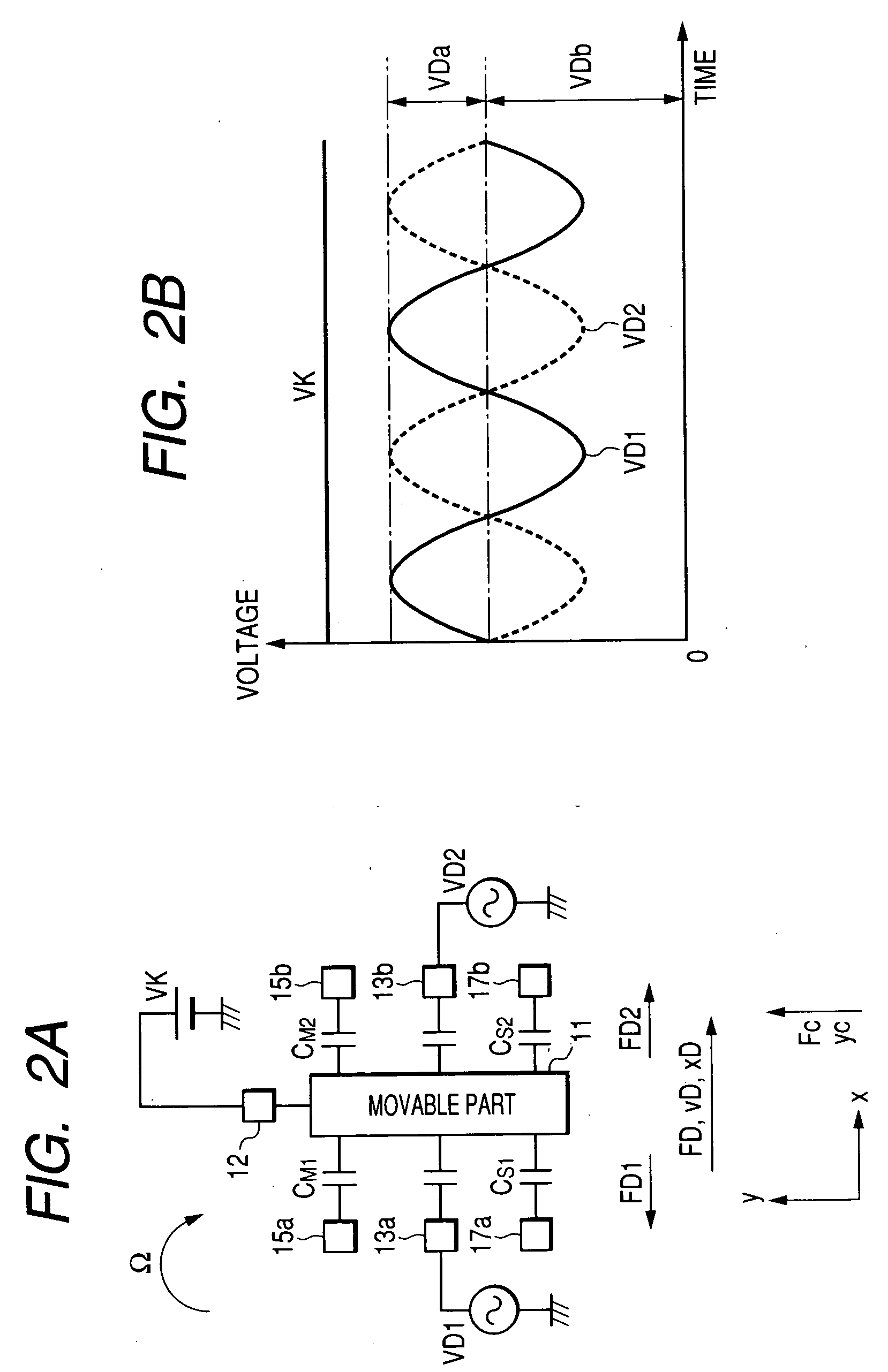Gyro sensor
- Summary
- Abstract
- Description
- Claims
- Application Information
AI Technical Summary
Benefits of technology
Problems solved by technology
Method used
Image
Examples
first embodiment
[0054]FIG. 1 is a block diagram showing a configuration of an electrostatically-driven / capacitance-detection type gyro sensor according to a first embodiment of the invention.
[0055] This gyro sensor includes a sensing element 1 having a movable part 11 which is movable on a 2-dimensional plane, and a detector unit 2 driving the sensing element 1 and detecting the angular velocity of a rotative motion imparted to the sensing element 1.
[0056] The movable part 11 is supported on a substrate mode of a single-crystal silicon material or the like by rectangular beams extending from the four corners of the substrate so as to be movable on the surface of the substrate (referred to as “motion plane” hereinafter).
[0057] The movable part 11 is provided with a movable electrode 12 which is applied with a bias voltage VK. In close vicinity of the movable part 11, there are disposed a pair of drive electrodes 13a, 13b generating electrostatic forces with the movable part 11 in the direction al...
second embodiment
[0138] Next, a gyro sensor according to a second embodiment of the invention is explained.
[0139] Since the second embodiment is different from the first embodiment only in a part of the structure of the drive signal controller, the following explanation focuses on this different part. As shown in FIG. 8, the drive signal controller 4a of the gyro sensor of the second embodiment is configured such that the full-wave rectifier 44 rectifies the shift signal Vps(t) outputted from the phase shifter 42 instead of the composite monitor signal VM(t) outputted from the differential amplifier 41.
[0140] When there is temperature change, not only the amplitude xDa of the displacement xD(t) of the movable part 11 but also its angular frequency ωd varies depending on the Young's modulus of the base material of the sensing element 1. In this case, since the amplitude vDa of the displacing velocity vD(t) cannot be unchanged even if the amplitude xDa of the displacement xD(t) is kept unchanged as ...
third embodiment
[0147] Next, a gyro sensor according to a third embodiment of the invention is explained.
[0148] The following explanation focuses on the difference in structure between the first embodiment and the third embodiment. As shown in FIG. 10A, in the third embodiment, the drive signal controller 4b is provided with a waveform shaper 46 shaping the shift signal VPS(t) outputted from the phase shifter 42 to have a rectangular waveforms instead of the variable gain amplifier 43, the full-wave rectifier 44 and the error amplifier 45, and also the sensor output signal generator 7b is provided with a differential amplifier 71b and a synchronous detector circuit 72b instead of the differential amplifier 71 and the synchronous detector circuit 72. The output of the waveform shaper 46 is supplied to the drive buffer 5b and synchronous detector circuit 72b.
[0149] The drive buffer 5b generates two complementary signals as the drive signals VD1 (t), VD2 (t), each of which exhibits a high voltage le...
PUM
 Login to View More
Login to View More Abstract
Description
Claims
Application Information
 Login to View More
Login to View More - R&D
- Intellectual Property
- Life Sciences
- Materials
- Tech Scout
- Unparalleled Data Quality
- Higher Quality Content
- 60% Fewer Hallucinations
Browse by: Latest US Patents, China's latest patents, Technical Efficacy Thesaurus, Application Domain, Technology Topic, Popular Technical Reports.
© 2025 PatSnap. All rights reserved.Legal|Privacy policy|Modern Slavery Act Transparency Statement|Sitemap|About US| Contact US: help@patsnap.com



